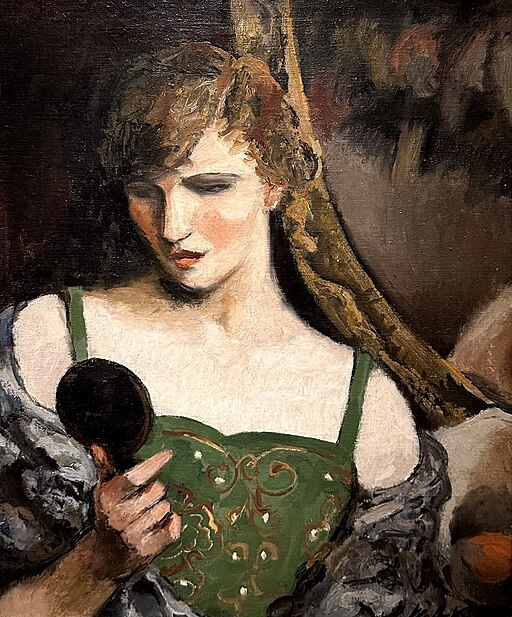
No one ever followed the old woman in black as she tottered away from the town center. Just a crazy old woman, of course, so who would give her a second thought? And not only that, but even though she was seldom noticed, there was something about her that made people just a bit uncomfortable. The tattered black clothes and veil, her habit of haunting places of death, and her inability to speak — or at least, her presumed inability. Her voice had never been heard, as far as anyone knew. So no one followed her. This was unfortunate, for if she had been followed, she would have been seen turning into a narrow way bordered on one side by the ancient dwellings common to that part of town, and on the other side by an equally ancient wall. There was a door set into the wall about half way down the alley — an old, heavy oaken door with iron fittings and a keyhole. The old woman stopped at the door and, seeming to glance all around as if to check for any would-be observers, produced a key. Moving with a speed and purpose that belied her tottering, swaying gait, she opened the door, stepped through, and quickly swung the door closed. The door looked, at first glance, like a forgotten and decaying portal, but the lock operated smoothly and the hinges had evidently been recently oiled, for they were completely noiseless.
Once inside the wall, the woman stood taller and immediately removed the veil, revealing a face that was not nearly so aged as her appearance had suggested. She strode quickly to a stone gardener’s hut built agains the wall and opened its locked door with another key. The interior was lit by high, narrow windows; it was dim inside but bright enough for the woman, whose name was Agneta, to change from her tattered black garments into an outfit that the lady of a wealthy family — wealthy, at least, by the standards of a rather isolated town of that day and time — might don to work, as a pastime, in her garden. The black outfit she stored in a barrel, placing it beneath some burlap sheets and bags. The bundle she carried — which was, in fact, the missing shirt from the hanged body in the square — she placed carefully in the bottom of a woven basket, covered again by burlap, which in turn was covered by a selection of vegetables she had picked earlier and stored in the hut for just this purpose.
Taking the basket of vegetables — and its secret — Agneta left the hut, locking the door behind her as she left. In the daylight, she was a woman of middle age with the air of confidence and prosperity expected of the woman of the town’s largest house and most prominent family. She strode to the large stone mansion set on a rise above the garden bordered by the hut — and the wall with the locked door. The mansion was surrounded by a high stone wall; a relic from an earlier, more violent age.
Agneta’s walked strongly, no longer betraying even a hint of elderly wobble, to a door in the back that led to the kitchen. “Cook,” she called happily as she entered, “I’ve gathered vegetables from my garden.” So saying, she tipped the vegetables from her basket — careful not to disturb the layers of cloth underneath — into a large bowl. As the cook came to inspect, clucking approvingly, Agneta left the kitchen with her basket. “I must shift my clothes,” she announced, as if to herself, and climbed the stairs to the second floor where the family maintained their private quarters. But she continued, without pausing, to the third floor. This level was largely unused at present; the mansion had been built to house either a larger family, or, more likely, a family with need of keeping additional servants and defenders, back in the days when the surrounding wall was necessary. On the third floor, Agneta went directly to a door at the south end of a corridor. The north and south wings of the mansion were marked by towers that had been, with their narrow archers’ windows, built for defense. Now they were generally ignored — but the way to this one was locked. Agneta produced another key and made her way past the locked door and up a final staircase to a room that was clearly a workshop.
She took the hanged man’s shirt from her basket and placed it on a wide table that already held many things — two human bones, small collections of hair from horse and goat, a silver handbell with sacred symbols — this had been broken, or perhaps cut, with three loths of metal removed from it and placed alongside. The table also held wood, nails, a bowl of reddish brick dust, a piece of glass as if from a window, and various dried herbs, and other less identifiable things that could have once been small animals, or parts of them. And the table held a book.
Even among the troubling collection, the book was the strangest and rarest item the table held. It was a grimoire, a spiritual textbook containing countless dark recipes, instructions, and spells. Agneta had finally acquired the last of the ingredients for the thing she had been working on for these past seven years. She was ready to construct her mirror.
